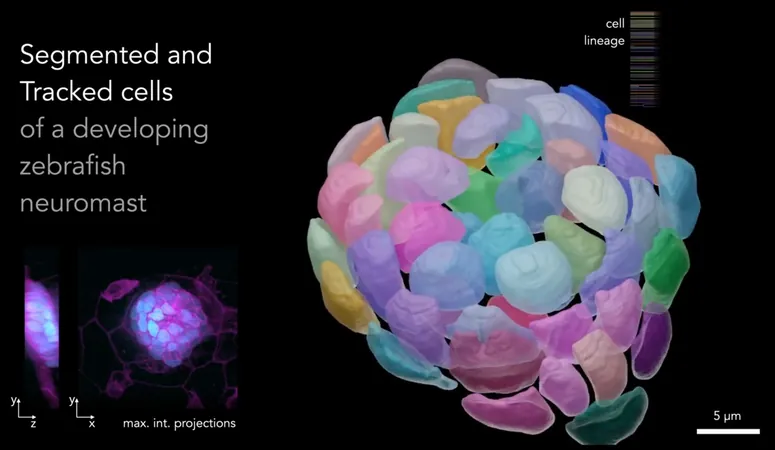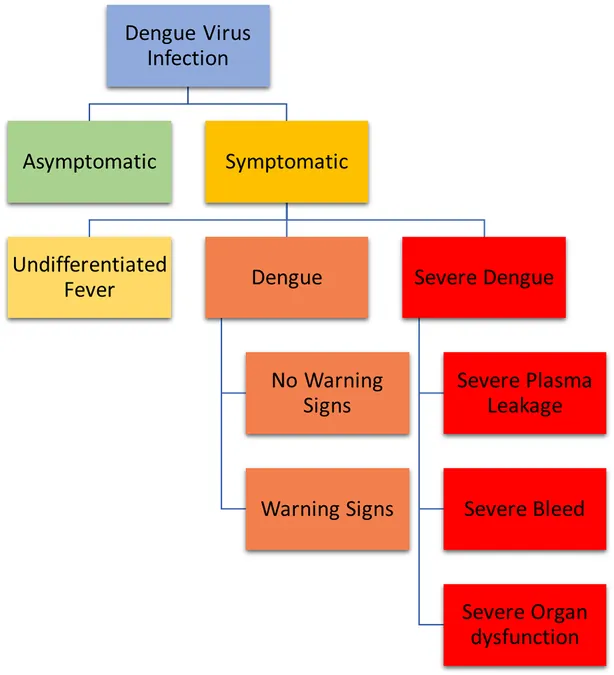
Revolutionizing Embryonic Cell Tracking: Meet Ultrack and inTRACKtive!
2025-08-25
Author: Ming
In the age of cutting-edge microscopy, researchers can witness the mesmerizing transformation of embryos in real-time. However, the real challenge lies in capturing the intricate journey of each cell as it finds its rightful spot within a developing organism.
Cells are in constant motion—dividing, shifting, and occasionally disappearing as they form essential tissues and organs. To track these cellular movements accurately, scientists use the nuclei as reference points, employing a technique known as segmentation. This crucial step lays the foundation for tracking cell movement frame by frame, a task pivotal for grasping not only developmental processes but also the mechanisms behind diseases and their responses to treatment.
Introducing Ultrack: The Future of Cell Tracking!
In a groundbreaking study published in Nature Methods, scientists from the Chan Zuckerberg Biohub in San Francisco have introduced Ultrack, an innovative cell-tracking platform that can scale from monitoring a handful of cells in petri dishes to tracking entire embryos in stunning 3D videos. Ultrack has exhibited remarkable efficiency and accuracy, standing out in international comparisons, such as the renowned Cell Tracking Challenge.
Loïc Royer, the director of imaging AI at the Biohub, points out how Ultrack transcends conventional tracking technologies. "It's easy to track cells in 2D or a limited number, but Ultrack excels in complex scenarios like full 3D embryos," he states. "Its speed, scalability, and user-friendly features make it a game-changer in the field."
A Smarter Way to Track Cells!
Traditional cell tracking methods typically involve two cumbersome steps—first, segmenting the cells in each video frame, and second, linking these cells across frames. This dual approach can falter, especially in blurry, 3D images where distinguishing individual cells becomes challenging. In contrast, Ultrack's algorithm intelligently combines segmentation and linking into a single processing task.
Every time Ultrack analyzes a video frame, it generates an ultrametric contour map, creating a hierarchy of boundaries for the possible cell segments. By comparing these spatial structures across frames, Ultrack accurately identifies true cell boundaries, much like the way we interpret shifting clouds in the sky.
This innovative strategy not only enhances efficiency—dramatically cutting down computation time—but also reduces tracking errors, allowing researchers to spend significantly less time on manual corrections. By using biological rules to guide segmentation, Ultrack has been able to cut correction time in dense tissue images by about half!
From Zebrafish to Sea Squirts: Ultrack in Action!
To showcase Ultrack's capabilities, the research team examined the development of the zebrafish neuromast, an organ crucial for fish navigation. They achieved near-perfect tracking accuracy and even reconstructed developmental trajectories for multiple embryos, contributing to the Zebrahub, a comprehensive zebrafish cell atlas.
But that's not all! Other scientists at Biohub are harnessing Ultrack to investigate the zebrafish immune system and various cellular behaviors.
Meet inTRACKtive: Your Interactive Cell Tracking Companion!
To facilitate deeper exploration of Ultrack's extensive datasets, Royer's team has launched inTRACKtive, a user-friendly, browser-based tool. This innovative platform allows researchers to manipulate embryos in 3D, follow the paths of specific cells, and analyze developmental processes at various speeds, even reversing time to observe events afresh.
Collaborating with the Chan Zuckerberg Initiative, the team has also compiled a 'Virtual Embryo Zoo,' featuring datasets from diverse species like mice and sea squirts, enabling scientists to delve into embryonic data interactively—from any device.
"We invite researchers to contribute their datasets to the Virtual Embryo Zoo, enriching this invaluable resource and fostering collaboration across disciplines," Huijben urges.
Looking ahead, the team plans to enhance inTRACKtive's functionality, merging imaging data with cell tracking results for even more dynamic visualizations that intertwine cellular behaviors with live microscopy. This pioneering endeavor promises to elevate our understanding of embryonic development to new heights!



 Brasil (PT)
Brasil (PT)
 Canada (EN)
Canada (EN)
 Chile (ES)
Chile (ES)
 Česko (CS)
Česko (CS)
 대한민국 (KO)
대한민국 (KO)
 España (ES)
España (ES)
 France (FR)
France (FR)
 Hong Kong (EN)
Hong Kong (EN)
 Italia (IT)
Italia (IT)
 日本 (JA)
日本 (JA)
 Magyarország (HU)
Magyarország (HU)
 Norge (NO)
Norge (NO)
 Polska (PL)
Polska (PL)
 Schweiz (DE)
Schweiz (DE)
 Singapore (EN)
Singapore (EN)
 Sverige (SV)
Sverige (SV)
 Suomi (FI)
Suomi (FI)
 Türkiye (TR)
Türkiye (TR)
 الإمارات العربية المتحدة (AR)
الإمارات العربية المتحدة (AR)